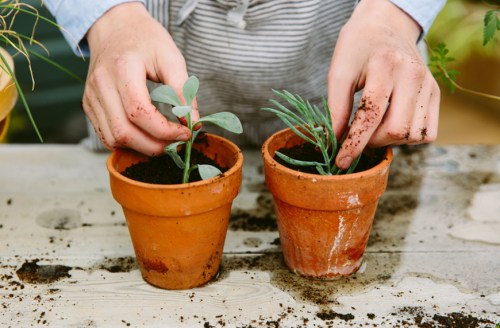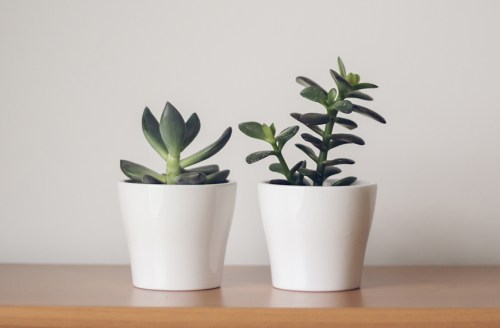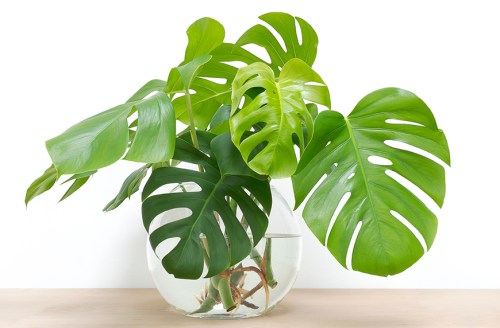5 easy plants to propagate whether you know what you’re doing or not
It's actually really easy to double the number of plants you own without totally draining your bank account. All you need to do is learn how to propagate.

There’s nothing better than having a house filled with greenery. The only downside? Those plants don’t always come cheap. But it’s actually really easy to double the size of your indoor garden without totally draining your bank account. All you need to do is learn how to propagate.
When you propagate a plant, you’re essentially taking a part of that plant and growing it into a brand new plant. For example, snipping sections off of my monstera to propagate over time has allowed me to have multiple plants throughout my home—and it was really easy to do. You don’t need to be a professional gardener to do it either—in fact, you really don’t even need to have a green thumb at all. To get started, check out these easy plants to propagate.
5 easy plants to propagate for beginners
1. Succulents

Propagating succulents is simple. All you need to do is remove a few leaves from the plant. Laura LeBoutillier, the plant expert behind Garden Answer, recommends doing so by gently wiggling the leaves from right to left and lightly twisting them, which should allow them to pop right off the stem. (If a leaf rips, it won’t grow roots.) After you have your leaves, set them in bright light for a few days to enable the ends to callus over. Then once the ends are dry, simply lie the leaves on top of cactus soil in bright, indirect light. Spritz them with water with a spray bottle, and repeat every couple days whenever the soil is dry.
You’ll eventually start to notice roots popping out of the ends—sometimes after a couple weeks, and sometimes after as long as a couple months. It all depends on the type of succulent you’re propagating. “Let it grow until a new succulent baby forms, then gently remove it and plant it in its own pot,” she said in a YouTube video. “You can remove the leaf at this point, but I prefer to leave it in tact so it can wither and fall off on its own.”
2. Monstera

Monsteras are easy plants to propagate in water, and it’s really fun to watch the roots develop. With a sharp and clean pair of scissors or knife, cut half an inch to an inch below the node and aerial root, which is where the roots will grow from once it’s in water. Next, place the cutting in a vase or jar of water. “Make sure the aerial root is submerged in water and place it in an area that gets a lot of bright, indirect light. I typically have mine about five feet away from a south-facing window. I find that the roots grow faster with the more light they get,” says Christian of Crazy Plant Guy in a YouTube video.
Change the water on a weekly basis, and always make sure the water is covering the aerial root. Once the roots are about 4 inches long (which could take up to six weeks), it’s ready to plant into soil.
3. Snake plant

While there are many different types of snake plants, Amanda Switzer, the plant expert behind Planterina, says they can all be propagated the same way. Once another plant—aka a pup—starts growing from the soil, take the entire plant out of its pot and gently pull away the new baby plant. “Wait until it’s big enough to survive on its own—maybe like five or six inches tall. Then, separate it from the mother plant and repot it. That’s the easiest way,” she said in a YouTube video. Or, if a leaf breaks off from your snake plant, Switzer says you can put the leaf in water and let the roots develop before transferring it to soil. When doing so, be sure to change the water once a week.
4. Pothos

To propagate a pothos, you’ll want to use a sharp, clean knife and cut off a section of the plant. Aim for a piece that’s at least six inches long with four or more leaves and two nodes—aka the brown bumps on the stem. After removing the leaf closest to the end you snipped, place the cut end in water and set it in a spot that gets bright, indirect sunlight. Replace the water weekly. After the cutting grows roots that are an inch or longer—which can take weeks—you can pot it in soil.
5. Spider plant

Spider plants develop a lot of babies, called spiderettes. When you want to propagate the plant, simply look for a spiderette that has a node, or a little bump at its base. Then, with a clean pair of scissors, snip the spiderette off its stem close to the node. Next, stick the base into a small bottle of water, allowing the roots to grow in the water, and set the plant in bright, indirect light. Be sure to change the water regularly as the roots are growing. Once the roots are a few inches long, plant it in soil.









